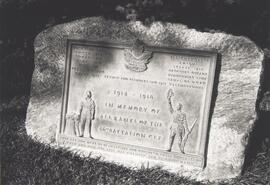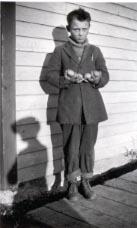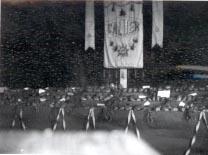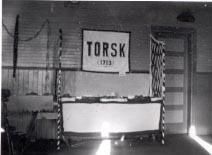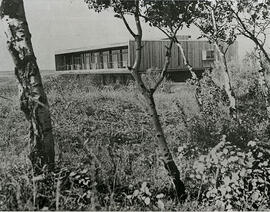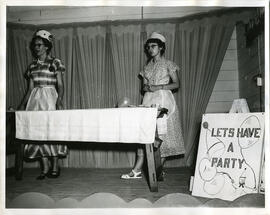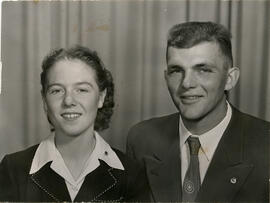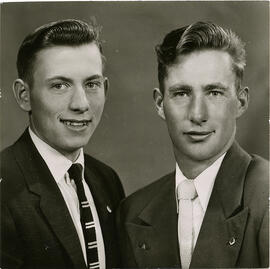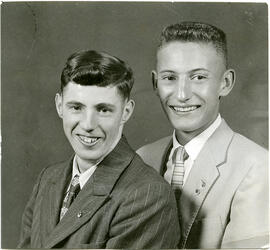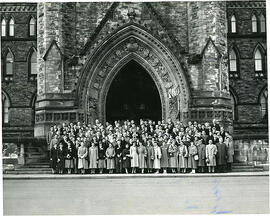- A-8791
- Item
- [199-?]
Close-up image of the 46th Battalion C.E.F. Memorial Stone located on the northeast corner of the Bowl. "1914-1918 In Memory of All Ranks of the 46th Battalion CEF". Also lists the battles and dates.
Bio/Historical Note: A memorial stone and plaque honouring the memory of those who served with the 46th Canadian Infantry Battalion (South Saskatchewan), Canadian Expeditionary Force, 1914-1918, sits under a tree on the northeast corner of the Bowl. Formed in February of 1915, the 46th battalion was filled primarily with Saskatchewan youths, many via USask. Also known as the "suicide battalion,” it fought in some of the bloodiest encounters of the war. Of the 5,374 men in the 46th battalion, 4,917 were either killed or wounded. A particularly costly battle was Passchendaele, where there were 403 casualties from the battalion's strength of 600 men. With the end of the war came demobilization and the end of the 46th Battalion. The soldiers became veterans and returned to civilian life. Many re-enrolled or entered the university for the first time. Many others did not return. The Memorial Stone was unveiled 11 November 1933 and was designed by Ms. M.J. Taylor of Winnipeg.

